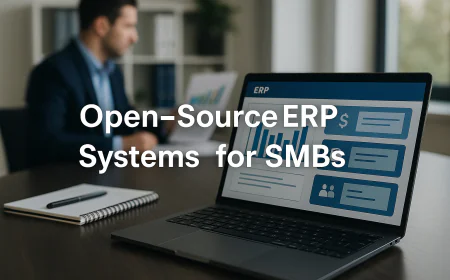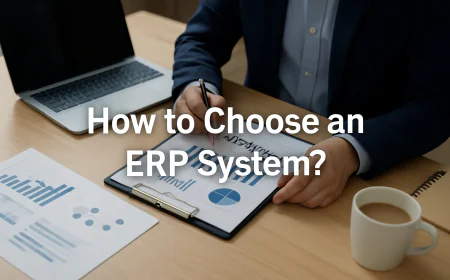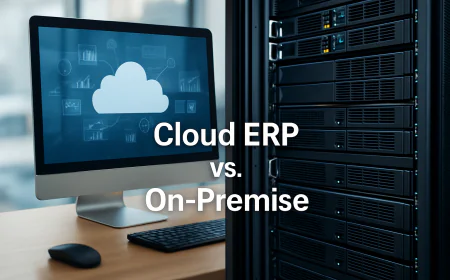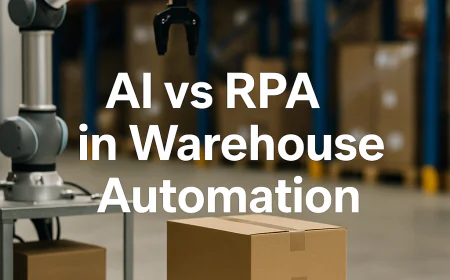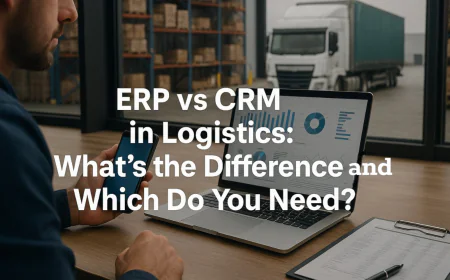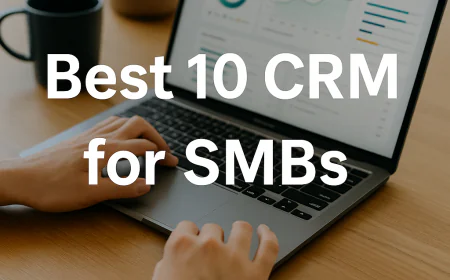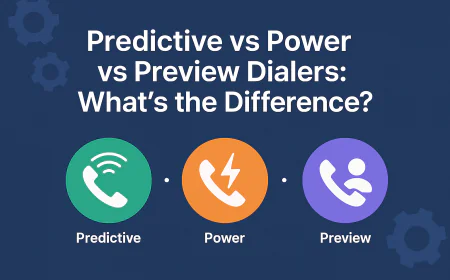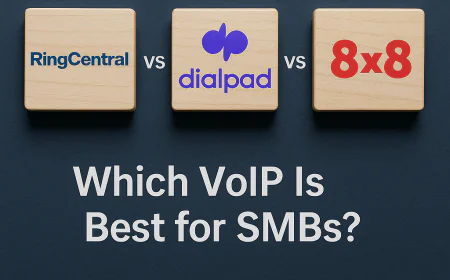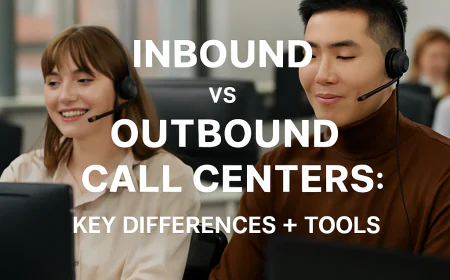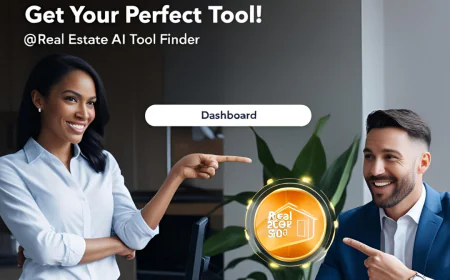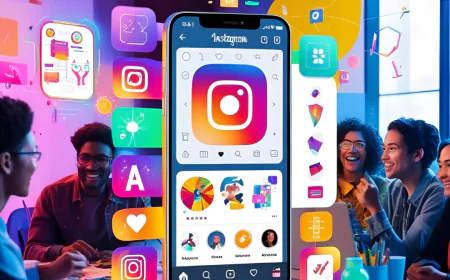Omnichannel vs Multichannel Contact Centers: Key Differences
Omnichannel vs multichannel contact centers explained: key differences, benefits, and which one fits your call center. Simple, clear, and expert-backed.
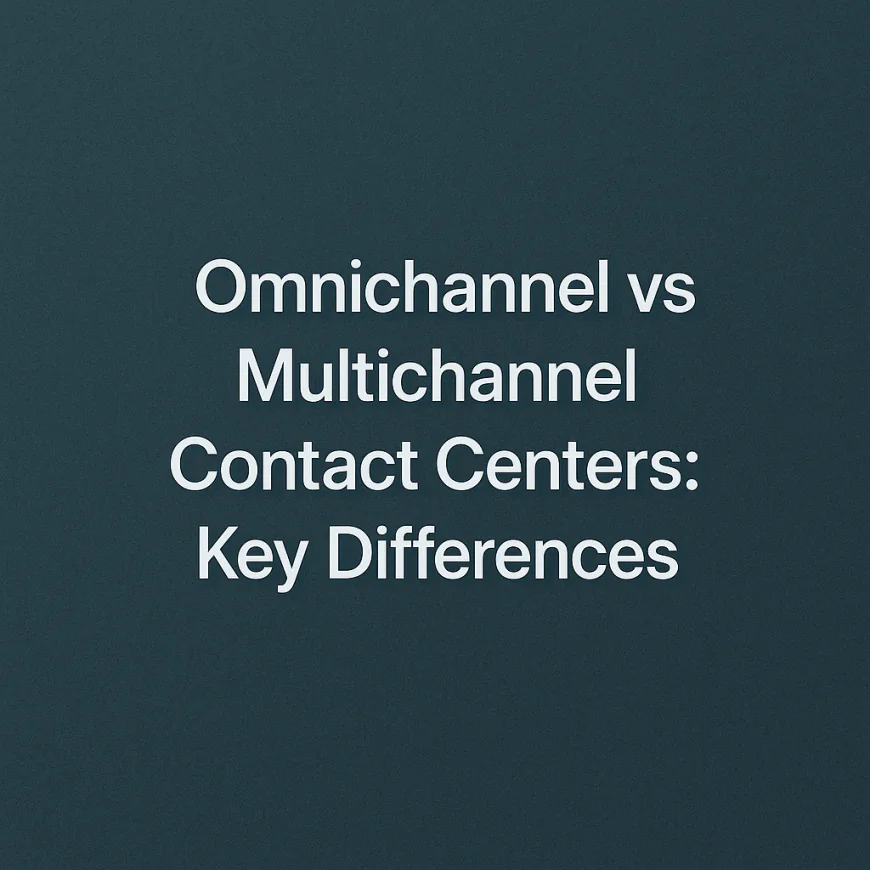
Table of Contents
- 1️⃣ Introduction
- 2️⃣ What Is a Multichannel Contact Center?
- 3️⃣ What Is an Omnichannel Contact Center?
- 4️⃣ Multichannel vs Omnichannel: 7 Key Technical Differences
- 5️⃣ Why Omnichannel Improves Customer Experience (With Real Scenarios)
- 6️⃣ What Key Features Should You Look for in Omnichannel Contact Center Software?
- 7️⃣ Which Is Right for You: Omnichannel or Multichannel Contact Center?
- 8️⃣ Want to Conclude More? Try These
-
1️⃣ Introduction
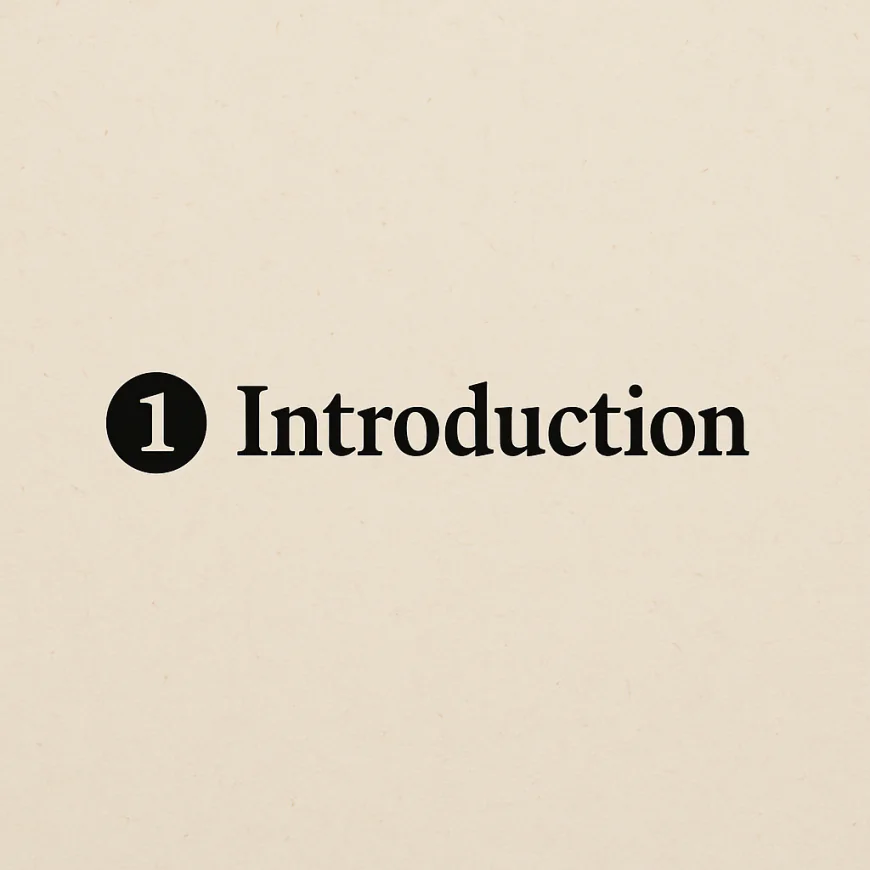
In today’s customer-driven economy, businesses can no longer afford to treat customer support channels as isolated silos. Whether you're running a small business scaling its support operations or managing an enterprise contact center, how you handle interactions across voice, email, SMS, live chat, and social media directly impacts customer experience (CX), agent productivity, and long-term loyalty.
Two terms dominate this space — multichannel and omnichannel — but despite being used interchangeably by some vendors, they are fundamentally different in architecture, impact, and strategic value.
This article breaks down those differences in detail, based on what business leaders, IT decision-makers, and CX strategists are searching for, including:
-
✅ What exactly defines a multichannel vs omnichannel contact center?
-
✅ How does channel integration affect customer journeys and resolution times?
-
✅ What are the technical and operational trade-offs?
-
✅ Which approach is right for your contact center today — and in the future?
We’ll also explore real-world use cases, recommended platforms, and how to make the right choice based on your business size, tech stack, and customer expectations.
Whether you’re evaluating new software, rethinking your support strategy, or migrating off legacy systems, understanding the difference between omnichannel and multichannel is mission-critical to delivering a world-class support experience.
-
-
2️⃣ What Is a Multichannel Contact Center?
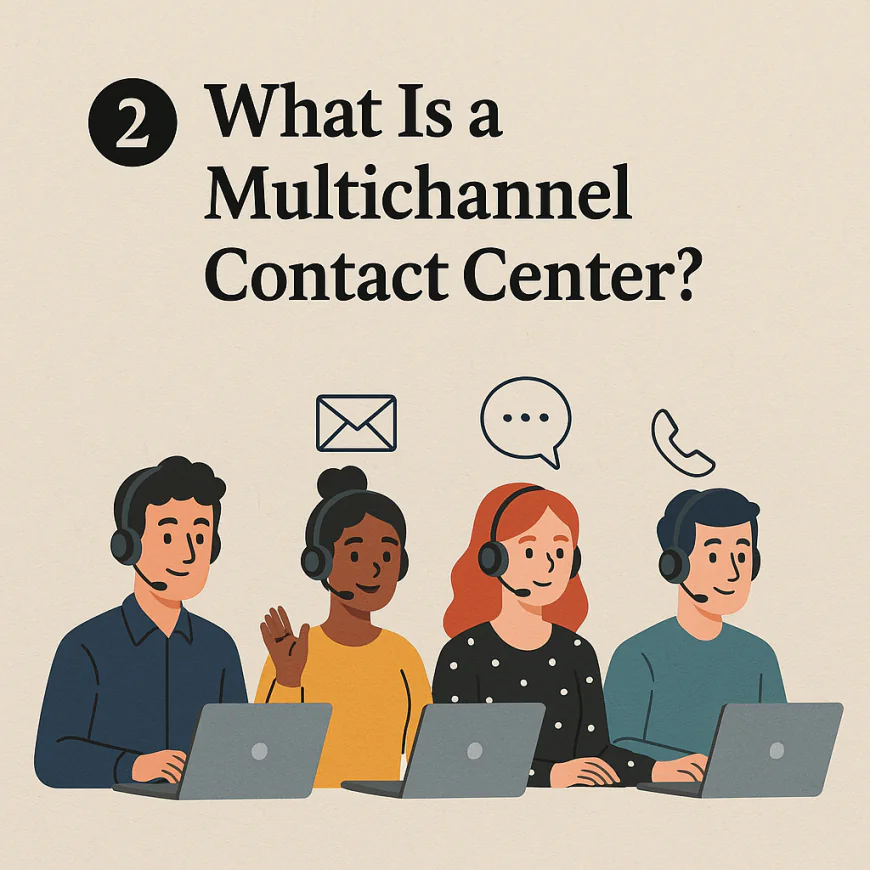
A multichannel contact center is a support system that allows customers to reach your business across multiple communication channels — such as phone, email, live chat, SMS, and social media — but these channels operate independently of each other.
That means a customer can email support, then later call the contact center — but the agent who picks up the call won’t automatically see the previous email thread unless they dig through a separate system. Each channel has its own workflow, data logs, and sometimes even separate teams.
Key characteristics of multichannel contact centers:
-
Customers can choose how to contact you — phone, chat, social, or email.
-
Channels often run on separate systems (e.g., email in Outlook, chat in Zendesk Chat, phone in Aircall).
-
Customer data and history may be scattered across platforms.
-
Agents need to manually switch between tools to track down context.
-
Reporting is channel-specific, not unified across platforms.
Pros of a multichannel setup:
-
Easy to get started with — most businesses already use email + phone.
-
Tools are usually simpler and cheaper when added individually.
-
Offers basic flexibility for customers who prefer different methods of contact.
Cons and limitations:
-
No shared context between channels means agents often repeat questions.
-
Customers must restart conversations every time they switch channels.
-
Channel switching creates longer handle times and frustration.
-
Managers have limited visibility across the entire customer journey.
Multichannel may work for very small teams or simple support setups, but as customer expectations grow, it creates friction that directly impacts satisfaction and loyalty.
-
-
3️⃣ What Is an Omnichannel Contact Center?
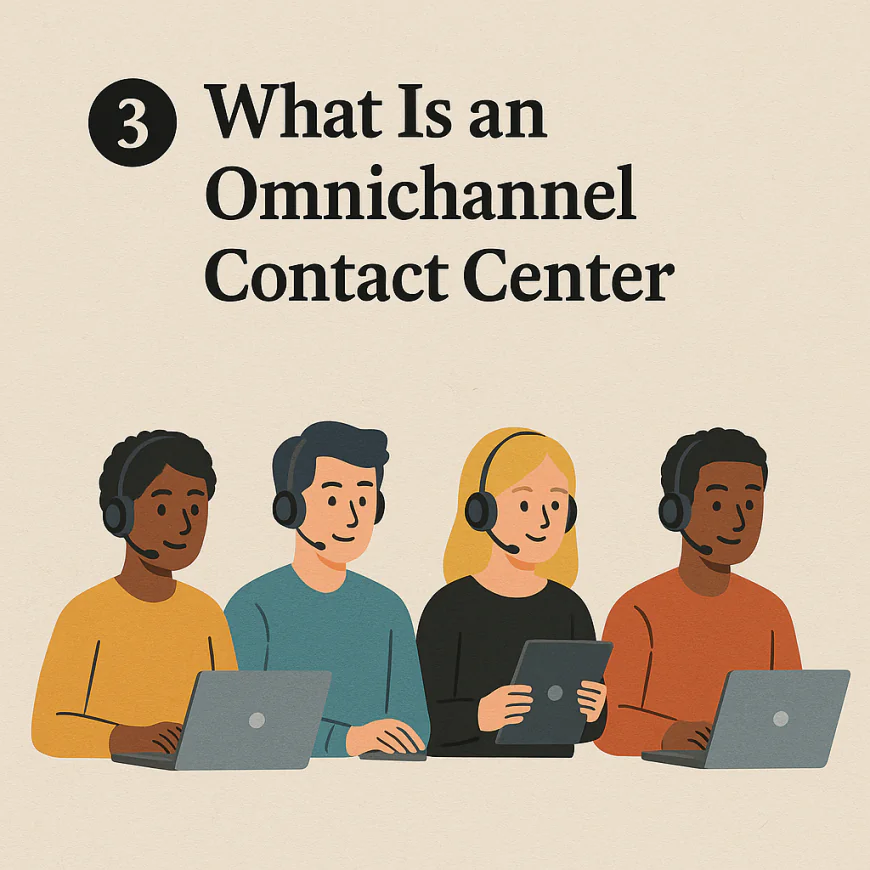
An omnichannel contact center is a fully integrated communication system that enables agents and customers to interact across multiple channels — such as phone, email, live chat, SMS, social media, and in-app messaging — within a single, unified interface.
Unlike multichannel systems where each channel operates independently, omnichannel platforms synchronize conversations across all touchpoints in real time. The customer experience is continuous, context-aware, and personalized, regardless of where the conversation started or continued.
🧩 Key Features of an Omnichannel Contact Center:
-
Unified Conversation Thread: Agents see the full history of customer interactions across all channels in one view — including previous phone calls, emails, and chats.
-
Channel Switching Without Losing Context: Customers can start a conversation on WhatsApp, continue via email, and finish over the phone — without repeating themselves.
-
Centralized Dashboard for Agents: Agents handle all communication streams from a single interface, eliminating the need to switch tabs or tools.
-
Smart Routing & Automation: Messages are routed based on issue type, customer profile, or agent availability — no matter the channel.
-
Cross-Channel Analytics: Supervisors can analyze performance, response times, and CSAT across all channels in one place.
🟦 How Omnichannel Works Technically:
An omnichannel system relies on a central customer engagement platform (CEP) or unified communications backend that consolidates:
-
Channel APIs (e.g., Twilio for SMS, WhatsApp Business API, email servers, VoIP carriers)
-
CRM data (like HubSpot, Zoho, Salesforce)
-
Routing logic and agent assignment rules
-
Interaction history storage (often with real-time sync and AI tagging)
This tech stack enables businesses to streamline agent workflows, reduce context loss, and offer truly connected customer journeys.
✅ Benefits of Omnichannel Over Multichannel:
-
Seamless Customer Journeys: No more “starting from scratch” when switching channels.
-
Faster Resolutions: Agents have all the context they need, reducing handle time.
-
Higher Customer Satisfaction (CSAT): Personalized, frictionless experiences lead to loyalty.
-
Improved Agent Productivity: Less tool switching, more focus on resolving issues.
-
Scalable for Growth: Ideal for businesses adding new channels without complexity.
⚠️ Challenges to Be Aware Of:
-
Implementation Complexity: Setting up an omnichannel platform requires integration between CRM, phone systems, chat, and social tools.
-
Higher Upfront Cost: Omnichannel platforms are more expensive than single-channel tools.
-
Training Required: Agents and admins may need to learn a new interface and workflows.
🛠️ Popular Omnichannel Platforms (With Official Links):
-
Talkdesk – Enterprise-grade omnichannel CCaaS platform
https://www.talkdesk.com -
Zendesk Suite – Omnichannel support across email, chat, voice, and social
https://www.zendesk.com -
Freshdesk Omnichannel – Unified helpdesk with voice, chat, and ticketing
https://freshdesk.com -
RingCentral Contact Center – Omnichannel routing + CRM integrations
https://www.ringcentral.com -
8x8 Contact Center – Omnichannel + global compliance
https://www.8x8.com
-
-
4️⃣ Multichannel vs Omnichannel: 7 Key Technical Differences
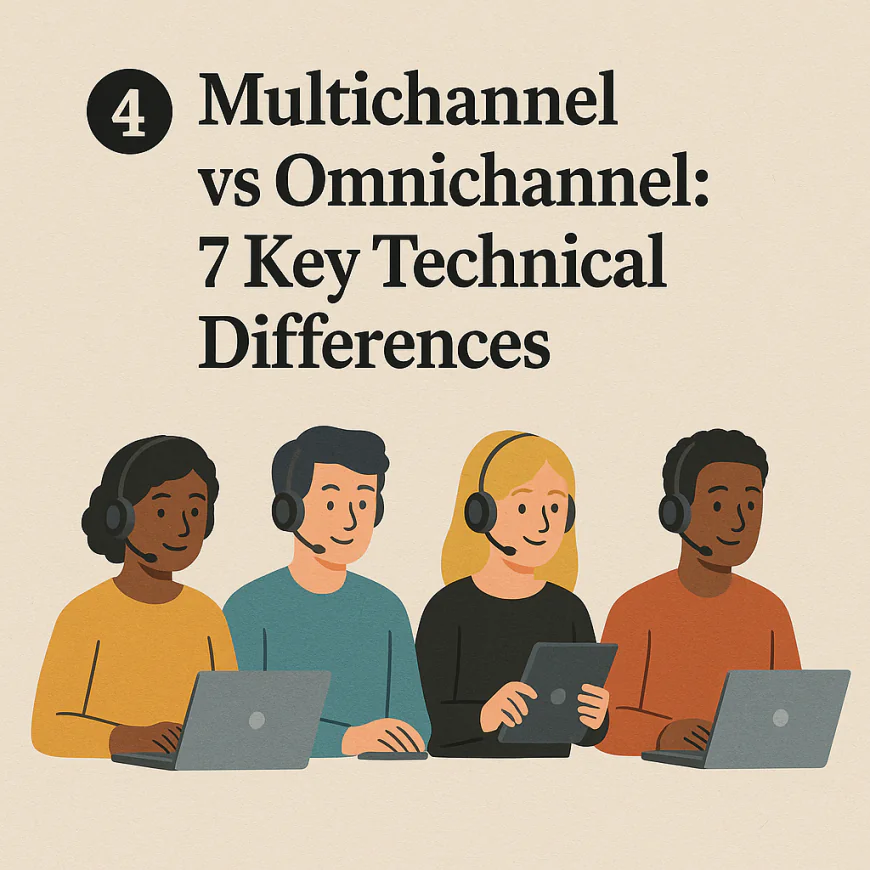
Understanding the difference between multichannel and omnichannel isn't just semantic — it's operational. Below are seven critical, technical, and strategic differences that impact how contact centers perform, scale, and retain customers.
1. Channel Integration
-
Multichannel: Channels operate independently. Your phone, email, chat, and social media touchpoints exist, but they don’t communicate with each other. If a customer emails, then calls, they may have to repeat themselves.
-
Omnichannel: Channels are deeply integrated. A customer can start on live chat, escalate to voice, and follow up via email — all without losing context or conversation history.
Why this matters: Customers expect seamless transitions. Omnichannel meets this expectation. Multichannel often frustrates.
2. Customer Journey Continuity
-
Multichannel: No persistent customer thread across platforms. Each channel is treated as a silo.
-
Omnichannel: Every channel feeds into a unified customer profile, allowing agents to see all past interactions, regardless of channel.
Example: A customer who complained on Twitter and followed up by phone won’t need to start from scratch in an omnichannel setup.
3. Agent Workspace Efficiency
-
Multichannel: Agents juggle multiple platforms or dashboards, slowing response times and increasing cognitive load.
-
Omnichannel: Agents use a unified interface to manage all channels in one place — improving productivity and response speed.
Real-world impact: Contact centers with omnichannel systems report lower average handling times and fewer agent errors.
4. Data & Analytics Capabilities
-
Multichannel: Analytics are fragmented. Reporting is channel-specific, making holistic performance tracking difficult.
-
Omnichannel: Centralized reporting and cross-channel analytics provide insights into the entire customer lifecycle.
SEO Insight: “omnichannel analytics” and “unified contact center reporting” are top-of-funnel queries for tech buyers.
5. Automation and AI Use
-
Multichannel: Limited automation per channel. Chatbots or IVR may exist, but they don’t work together.
-
Omnichannel: AI is orchestrated across all channels — e.g., a chatbot can collect customer intent and hand off to a live agent with full context in voice or email.
Use case: Tools like Talkdesk and Dialpad offer AI-driven omnichannel orchestration.
6. Personalization Capabilities
-
Multichannel: Limited to per-channel history and behavior.
-
Omnichannel: Personalization is powered by shared customer data, making it possible to deliver consistent and context-aware messaging across all touchpoints.
Example: Omnichannel systems can auto-prioritize VIP customers regardless of whether they call or chat.
7. Customer Satisfaction (CSAT) Outcomes
-
Multichannel: Often leads to repetition and frustration, which drags CSAT scores down.
-
Omnichannel: Reduces friction and boosts loyalty, with companies typically reporting 15–25% higher CSAT after switching.
-
-
5️⃣ Why Omnichannel Improves Customer Experience (With Real Scenarios)
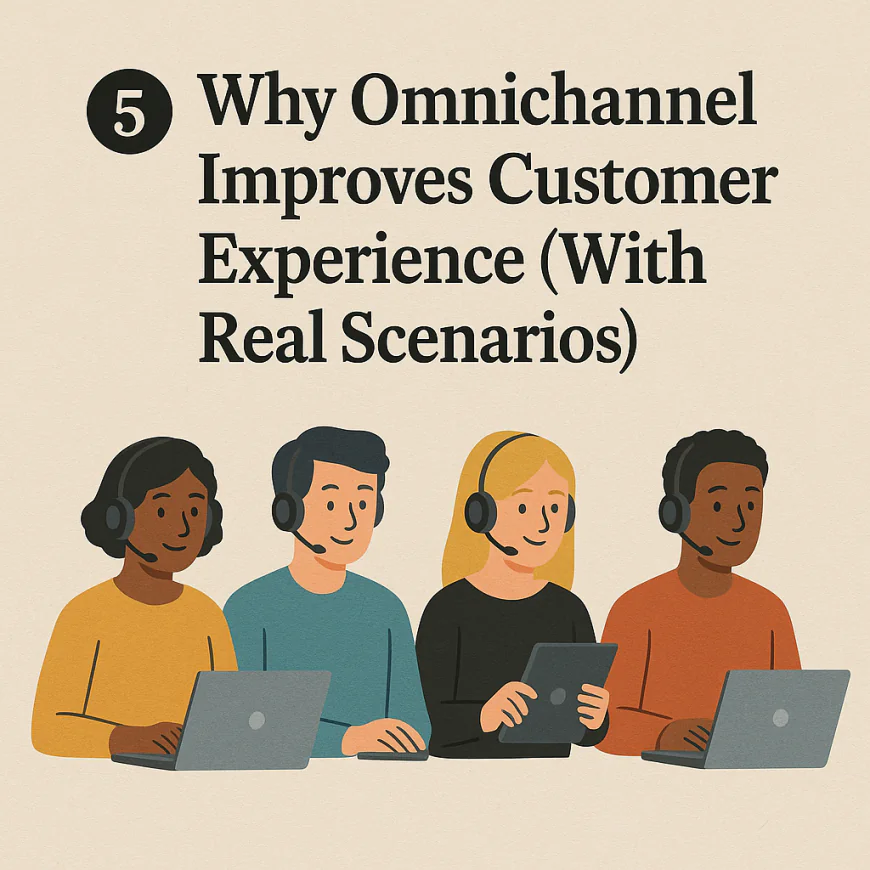
Omnichannel isn’t just a technical upgrade — it’s a game-changer for customer satisfaction and loyalty. This section breaks down the real-world benefits of omnichannel contact centers using specific scenarios your customers face daily.
Scenario 1: No More Repeating Themselves
Customer Friction in Multichannel: A user chats with a bot, gets redirected to phone support, and has to explain everything again.
Omnichannel Outcome: When the call connects, the agent sees the entire chat transcript, knows the customer’s name, issue, and intent — and solves it without starting from scratch.✅ Result: Higher CSAT, lower handle time, and reduced agent frustration.
Scenario 2: Channel Choice = Customer Comfort
Multichannel Limitation: Customers must use whatever channel is offered — e.g., only phone or only email during business hours.
Omnichannel Advantage: Customers get to choose how they engage — voice, SMS, WhatsApp, chat, or email — and switch anytime.✅ Result: Customers feel in control. Conversion and retention improve.
Scenario 3: Real-Time Context = Faster Resolution
Multichannel Pitfall: A support agent has no idea the customer just abandoned their cart on your website.
Omnichannel Edge: The system alerts the agent about the cart issue, complete with product details and behavior history.✅ Result: Agents don’t just respond — they anticipate. Proactive support drives satisfaction.
Scenario 4: Unified History = No Knowledge Gaps
Multichannel Fallback: Agents don’t know if the customer has had prior issues or is a repeat buyer.
Omnichannel Win: With tools like Zendesk and Intercom, agents see full customer timelines — product use, tickets, surveys, and feedback — in one place.✅ Result: Every interaction is personalized. Customers feel understood and valued.
Scenario 5: Post-Sale and Support Become Seamless
Multichannel Disconnect: Sales reps close the deal, then hand off to support — but the support team has zero context.
Omnichannel Resolution: Support agents inherit all CRM notes, transcripts, and purchase history instantly.✅ Result: Faster onboarding, fewer escalations, and smoother handoffs.
Scenario 6: Higher Engagement Across the Journey
Studies show omnichannel users engage with brands 89% more often and spend up to 30% more than single-channel customers (source: Aberdeen Group).
✅ Bottom line: Omnichannel isn't just support — it's revenue acceleration.
-
6️⃣ What Key Features Should You Look for in Omnichannel Contact Center Software?
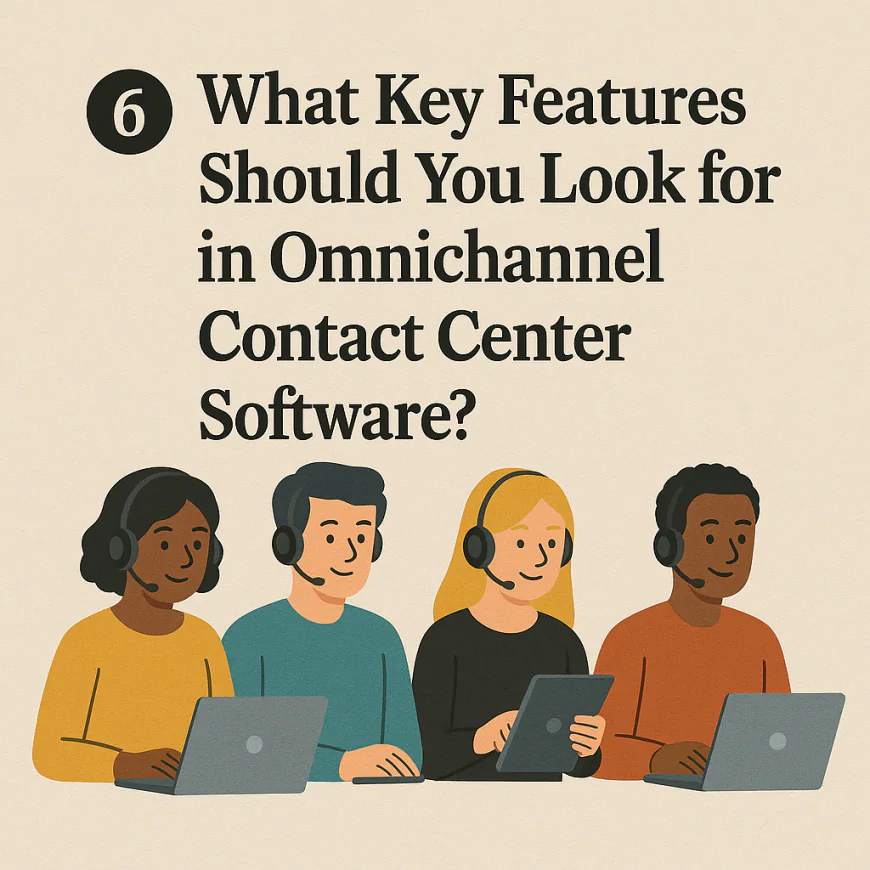
What is a unified agent interface, and why is it important?
A unified agent interface (sometimes called a “single pane of glass”) allows customer support agents to manage all communication channels—voice calls, live chat, SMS, email, social media messages—in one centralized dashboard. This eliminates the need to toggle between multiple apps or tabs, reducing response times and agent errors. For example, platforms like Talkdesk provide this streamlined experience, improving agent efficiency and customer satisfaction.
How do persistent conversation threads across channels improve support?
Persistent conversation threads ensure that no matter how a customer switches communication channels (e.g., from chat to phone to email), the entire conversation history stays connected and accessible to agents in real time. This prevents customers from having to repeat information, speeds up resolution, and creates a seamless support experience. Freshdesk Omnichannel offers this feature by automatically merging all interactions into a single timeline.
Why is real-time customer context essential in omnichannel software?
Real-time customer context provides agents with immediate access to the customer’s profile, purchase history, recent interactions, and current activity (like browsing behavior or abandoned carts). This data allows agents to personalize conversations, anticipate needs, and offer proactive solutions, significantly improving first-contact resolution rates and customer loyalty.
What role does AI and automation play in omnichannel contact centers?
AI-powered features like chatbots, sentiment analysis, and intelligent routing optimize workflows by automating repetitive tasks, triaging tickets, and routing customers to the most qualified agents based on issue type and urgency. This reduces wait times and enhances the overall customer experience. Many platforms, including Dialpad, integrate AI capabilities directly into their omnichannel solutions.
How important are analytics and reporting for omnichannel contact centers?
Advanced analytics track performance metrics across all channels—such as average handle time, customer satisfaction scores, and channel usage patterns—enabling data-driven decisions. Detailed reports help managers identify bottlenecks, improve training, and optimize channel strategies. Platforms like Zendesk provide robust omnichannel analytics dashboards that aggregate multi-channel data for comprehensive insights.
Where can I find reliable omnichannel contact center software with these features?
Some of the top omnichannel contact center platforms with all these critical features include:
-
Zendesk
These platforms offer scalable solutions suitable for SMBs and enterprises alike, combining unified agent views, AI automation, and deep analytics to elevate customer experience.
-
7️⃣ Which Is Right for You: Omnichannel or Multichannel Contact Center?
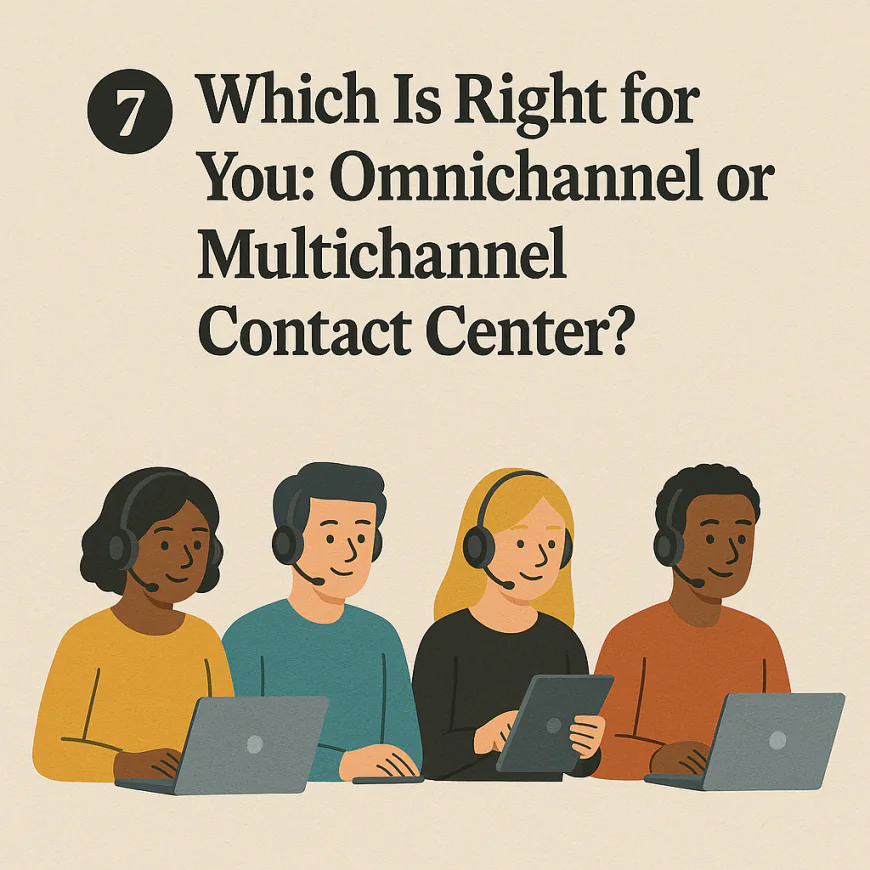
What factors should guide your decision between omnichannel and multichannel?
Your choice should be based on a mix of operational complexity, customer expectations, team capabilities, and long-term CX goals. Omnichannel contact centers offer a fully unified experience across every channel, ideal for businesses with complex support needs, while multichannel setups provide channel variety without integration, better for simpler use cases.
How does your business size influence which model fits best?
-
Small businesses and startups: Multichannel is often more appropriate due to lower cost, faster setup, and fewer customer touchpoints. Example: A small e-commerce store using separate email, chat, and phone support with no need to unify them.
-
Mid-sized companies: If you're scaling quickly and need visibility across interactions, omnichannel becomes valuable. Example: A SaaS company managing chat, phone, and in-app messaging across teams.
-
Large enterprises: Omnichannel is often essential. You’re likely managing multi-step, multi-channel customer journeys that require context retention across voice, email, chat, and even social platforms.
What are your customer experience (CX) priorities?
Ask yourself:
-
Do your customers contact you on more than one channel per issue?
-
Do they expect you to know their history instantly across interactions?
-
Is personalization a core part of your support strategy?
If yes, omnichannel is the only model that meets these expectations. It gives agents a 360° view of the customer, unifying conversations from multiple platforms (e.g., Zendesk + WhatsApp + phone) in a single interface.
If not, and your goal is simply to be "reachable" on multiple channels without continuity, multichannel will suffice — and at a lower cost.
What technical infrastructure and integrations do you have in place?
Omnichannel platforms require solid backend support — typically including:
-
CRM integration (e.g., HubSpot, Salesforce)
-
Ticketing and helpdesk systems
-
Channel APIs (WhatsApp, SMS, Facebook Messenger, etc.)
-
Data reporting and AI tools
If your team lacks the technical bandwidth to maintain integrations, multichannel tools like Zoho Desk or Freshdesk (on a basic plan) provide easier, no-code setups.
Quick Decision Guide: Omnichannel vs Multichannel – Which Is For You?
Use these as fast reference points:
Choose Omnichannel if:
-
You want customers to switch between chat, email, and phone without losing context
-
You have dedicated support/IT teams to manage software and integrations
-
Personalization, efficiency, and real-time insights matter deeply
-
You want to maximize agent productivity and reduce repetition
✅ Top omnichannel tools:
Choose Multichannel if:
-
You need to offer multiple communication methods independently
-
Your team size is small and each agent handles one channel at a time
-
You’re just getting started and want a simpler, lower-cost approach
-
Channel context sharing isn't critical
✅ Top multichannel tools:
Which model offers better long-term scalability?
Omnichannel is designed for long-term growth. It allows you to:
-
Add new channels (e.g., Instagram DMs, SMS) without creating silos
-
Train AI to respond across all platforms using unified data
-
Track customer satisfaction trends regardless of platform
-
Reduce average handling time by streamlining every interaction
Multichannel solutions may hit a ceiling as your business grows — with channel switching, context loss, and agent fatigue becoming real problems over time.
What are the core differences between omnichannel and multichannel contact centers?
To recap:
-
Multichannel contact centers offer multiple ways for customers to reach you — phone, chat, email, SMS — but those channels operate in silos. There's no continuity or context sharing across platforms.
-
Omnichannel contact centers unify those same channels into a single, cohesive system, ensuring that customer history, preferences, and previous interactions are visible to agents at every step.
Which model delivers better customer experience (CX)?
Omnichannel consistently delivers a superior CX because it reduces repetition, frustration, and friction. Customers don't need to repeat themselves. Agents work faster and smarter with complete context.
Multichannel works well if your CX needs are simpler, or if you're starting small and need basic availability over multiple platforms without integration overhead.
What should SMBs and growing teams consider most?
-
Start with multichannel if your team is small, your customer volume is low, or you’re still validating your support process.
-
Shift to omnichannel as your ticket volume increases, customer journeys become more complex, or you want to improve CSAT and resolution times.
What’s the ultimate recommendation?
Choose the model that aligns with your business stage, technical resources, and CX vision.
For startups and lean teams: Try tools like Zoho Desk or Freshdesk in multichannel mode — they’re simple, affordable, and effective.
For scaling SMBs or enterprises: Consider investing in omnichannel platforms like Zendesk Suite, Talkdesk, or Freshdesk Omnichannel to future-proof your support and delight customers at scale.
-
-
8️⃣ Want to Conclude More? Try These

More tests. More answers. Explore these next to conclude smarter.
These handpicked articles help you explore more angles so you can conclude with confidence.
🔄 Need Help Setting Up Your Call Center?
Looking for a comprehensive, step-by-step guide tailored for small businesses? Learn everything you need to get started in:
👉 How to Set Up a Call Center for a Small Business article
🔄 Curious About Virtual Call Centers or Looking for a Remote-First Alternative?
If you're building a call center but prefer a flexible, cloud-based setup, this guide breaks it all down:
👉 What Is a Virtual Call Center? Benefits & Setup Guide
🔁 For Enterprise-Level Needs
Scaling beyond the SMB stage? If you're looking for powerful, enterprise-ready platforms with advanced routing, deep analytics, and global compliance, explore:
👉 10 Best Call Center Phone Systems for Large Enterprises🧩 For Small and Midsize Businesses
Running a small or midsize business? For flexible, cost-effective solutions designed for lean teams, check out:
👉 10 Best Call Center Phone Systems for SMBs
🔄 Need Help Comparing Call Center Software vs Phone Systems?
Not sure which solution is right for you? Get a clear breakdown of features, differences, and use cases in:
👉 Call Center Software vs Phone System: Key Differences
🔄Looking to Supercharge Your Call Center with CRM Tools?
Discover the top integrations that boost efficiency, improve customer experience, and streamline operations in:
👉 Top 10 CRM Integrations Every Call Center Should Use
🔄 Confused About ACD, IVR, and Skills-Based Routing?
If you're not sure how call routing works — or which system your call center really needs — get a clear, jargon-free breakdown in:
👉 Call Routing Explained: ACD vs IVR vs Skills-Based Routing
🔄 Choosing a VoIP Provider But Don’t Know Where to Start?
From pricing clarity to mobile features and CRM compatibility, we’ve ranked the top contenders for growing teams in:
👉 7 Best VoIP Providers for Small Businesses
🔄 Still Using a Landline? Wondering If VoIP Is Worth the Switch?
We break down cost, reliability, scalability, and key call center features in:
👉 VoIP vs Landline: What’s Best for Call Centers? article
🔄 Stuck Between RingCentral, Dialpad, and 8x8?
We compared all three across pricing, features, reliability, and integrations — so you can skip the guesswork and pick the right VoIP for your SMB. Dive into the full breakdown:
👉 RingCentral vs Dialpad vs 8x8: Which VoIP Is Best for SMBs?
🔄 Inbound vs Outbound Call Centers: Not Sure Which You Need?
Discover the core differences, pros and cons, and best-fit tools for each model — so you can set up the right strategy from day one:
👉 Inbound vs Outbound Call Centers: Key Differences + Tools
🔄 Choosing Call Center Software? Don’t Wing It.
Step-by-step guide to choosing the best call center software for your team based on size, features, budget, and use case — expert picks included.
👉 How to Choose the Best-Fit Call Center Software
What's Your Reaction?
 Like
1
Like
1
 Dislike
0
Dislike
0
 Love
1
Love
1
 Funny
0
Funny
0
 Angry
0
Angry
0
 Sad
0
Sad
0
 Wow
1
Wow
1







